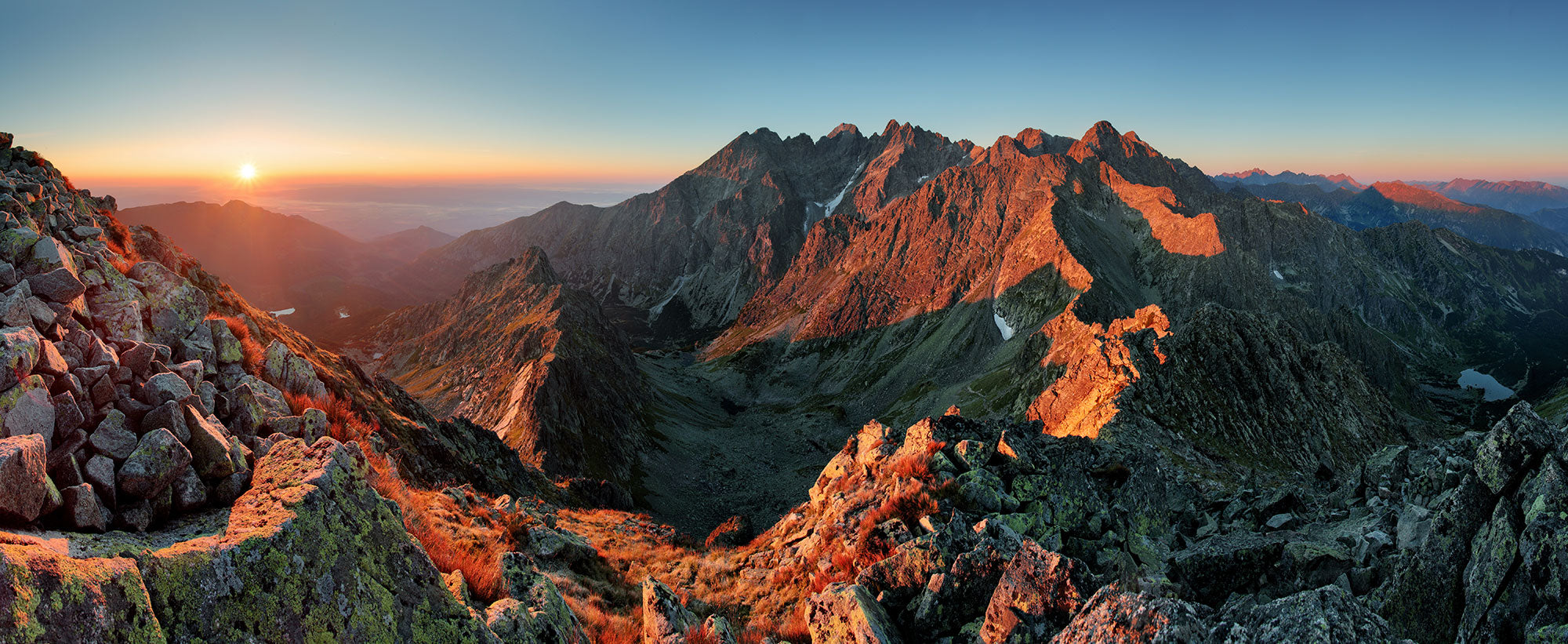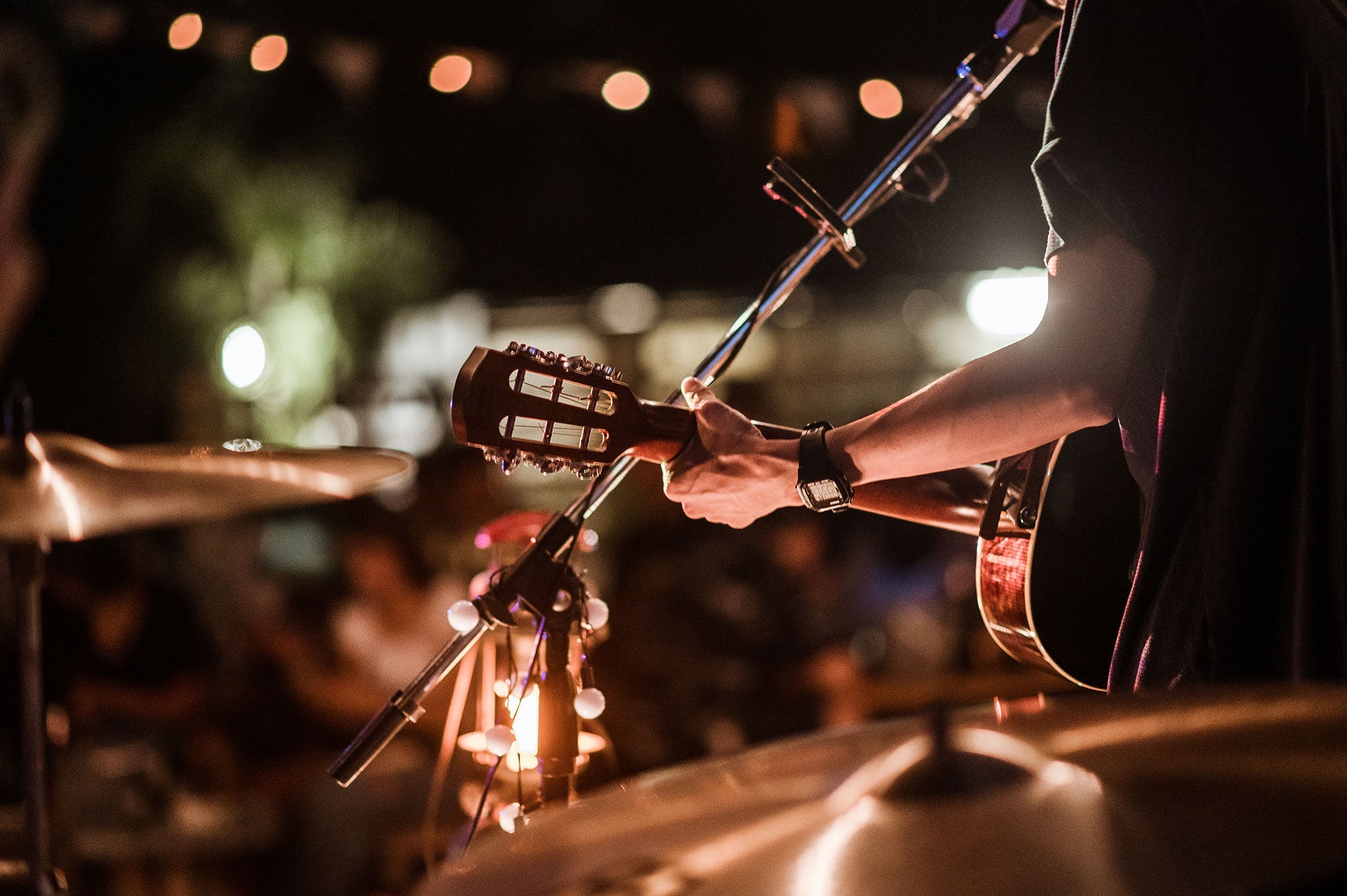
Landscape photography - the right way to do it!
If you like to be outdoors and prefer hiking on vacation, you can experience the wonders of nature up close. But you're often disappointed when you look at the photos of these experiences afterwards at home. The light, the colors and the vibrancy of the landscape are often difficult to capture and sometimes don't look as breathtaking in the pictures as you remember them. Yet even amateur photographers can take incredible photos that capture the true beauty of nature with the right equipment, a little patience and a few tricks. From the right tripod to using the golden ratio to photographic practice exercises, we've rounded up everything you need to know for great landscape photography!
The right photographic equipment
The right equipment is essential for a successful landscape photo. This definitely includes a digital single-lens reflex camera (DSLR), a wide-angle lens and a tripod. The wide-angle lens is necessary to take a picture of a whole landscape and should have a focal length of about 35 mm. It is also possible to take pictures with a telephoto lens, because with it you can zoom in especially well on certain features. However, the best pictures are taken with wide-angle fixed focal lengths with manual focus, because you can create a variety of effects with different focal lengths.
You can also find the right camera bag for your equipment and everything you need to protect your camera here in the Oberwerth Shop. From classic camera bags modern sling bags up to noble photo-beachers and backpacks and backpacks. Of course you will also find hand straps and shoulder straps. Finest craftsmanship from the best materials. Feel free to look around and find the bags & accessories that best suit you and your equipment!
Other helpful pieces of equipment include a polarizing filter and a neutral density filter. A polarizing filter can reduce glare and dramatically improve the colors in your images, while a neutral density filter can help you capture longer shots of moving clouds or waterfalls. Many experienced landscape photographers also carry a lens blower, which can be useful for removing dust and dirt from the lens. Overall, the equipment you carry with you on long forays into nature in any weather should be outdoor-ready and weather-resistant. The camera bags of the Oberwerth Hydro Line, for example, are suitable for the safe stowage of camera and lenses. Made of water-repellent hydrophobic leather, these bags are specially designed for photography in any weather and are perfect for outdoor photography.
A sturdy tripod is also essential for landscape photography, as it provides a stable platform for your camera and allows you to take long exposures without shaking or blurring. Look for a sturdy tripod with a maximum load capacity greater than the combined weight of your camera and lens. A good, easily adjustable tripod head is also important so that you can attach the camera to the tripod quickly and without fuss. For a stable stand, modern tripods are equipped with tiltable rubber feet. The ideal tripod should also be easy to transport and handle. While a high-quality tripod can be a real investment, it will pay for itself and will also last you for years to come. In addition to the tripod, you should also consider a remote shutter release or cable release to prevent camera shake. This can be especially useful when shooting long exposures.
Helpful camera settings
In landscape photography, it is advisable to work with a small aperture, i.e. a large aperture value of f/11, for example. This allows you to achieve maximum depth of field, so that a larger part of the image is in focus. The ISO setting should be set as low as possible to minimize noise in the photos. This pays off especially in landscape photography, where you want to capture fine details and textures in your images. It's also essential to use manual focus to ensure even exposure in your photos. This is especially important if you are shooting a series of images for a panorama or an HDR photo.
Professional landscape photographers, of course, also use post-processing on the computer to get the most out of their images. To do this, you should already make sure when taking the pictures that they are saved in RAW format, because this is the only way to have all the options open to you afterwards to emphasize different aspects of the image. If you'd like to learn more about editing photos after the fact and how to get started, you can read all about it in our text Important Steps for Beginners in Photo Editing.
Subject and lighting conditions
Finding the right subject can be one of the biggest challenges of landscape photography. When choosing motifs, you can first be guided by what appeals to you personally and where your eye wanders when looking at a landscape. But originality is also required, and so you can specifically look for motifs on which interesting and unique elements can be found. For example, this could be dramatic mountains of clouds, specially shaped trees, imposing mountain ridges or crystal clear rivers. Pay attention to colors, textures, lines, and patterns. To make a photo look particularly interesting and attract the viewer's attention, you can purposefully capture contrasts in the landscape, such as a meadow of flowers in contrast to a rugged mountain range.
Lighting is also crucial to a successful landscape photo. For example, avoid shooting during midday when the light is harsh and unflattering. Instead, look for interesting lighting conditions at sunrise, during the 'blue hour', at sunset or changing weather conditions. These times can create beautiful and unique lighting effects that will make your photos look more dynamic and impressive. Especially in the last hours of the day, before the sun disappears over the horizon, great shots can be taken with the silhouettes of trees or mountains that are now particularly prominent against the horizon.
An appealing image composition
Once the right subject is found, it's a matter of figuring out the best angle and ideal composition to capture it. Composition is often referred to as the key to a successful landscape photo, but it's all about creating a coherent image that looks aesthetically balanced without becoming flat and boring.
The simplest trick you can use to easily improve your landscape photography is to follow the golden ratio. This famous ratio is found in both nature and art and is perceived by our human brain as particularly balanced and coherent. Since very few photographers want to learn the complicated mathematical formula by heart, let alone calculate it for each image, they usually work with the rule of thirds, which comes quite close to the golden ratio: if you divide the image into thirds, the golden ratio is roughly between the first two and the last third. In landscape photography, both the center of gravity of the image and the horizon line should be positioned in the golden ratio. For image composition, also look for leading lines such as roads or paths that can draw the viewer's eye into the image and connect the foreground to the background. These lines add depth and dynamism to your photos.
To keep the image interesting and captivate the viewer's attention for a moment, it should be emotionally appealing, personal, vivid, and most importantly, vivid. This effect is achieved through a composition that has a foreground, a center field and a background of the image, all of which are different and appealing. Usually the first thing that strikes you is a beautiful background for the landscape photo. Once this is established, you can look for a strong foreground element that draws the eye, helps to classify the proportions and gives depth to the image. Next, look for the best perspective where both come together and are joined by a coherent center field.
Finally, the image should be technically sound with no distortions, sensor speckles, color fringing or the like. It should also be sharp and have a straight horizon line.
Tips and exercises for successful landscape photography
If you're already itching to shoot your next landscape photos today, you don't have to wait until your next vacation in the mountains. With these simple tasks, you can practice the craft of landscape photography comfortably at home until then:
● Photograph the most beautiful landscapes within a 10-kilometer radius
of your own home
● Photograph the same landscapes at different times of day
and in all four seasons
● Create landscape photos with reflections or symmetry
● Choose an unusual perspective
● Try your hand at landscape photos in black and white
● In addition to the usual landscape format, also try upright photography for a change
Ultimately, the key to successful landscape photography is having the right camera equipment, choosing the right subject, and considering the light. With these tips, you'll soon be well on your way to taking stunning landscape photos.
sources
https://www.davidkoester.de/landschaftsfotografie-lernen/landschaftsfotografie-tipps/
https://stephan-forstmann.de/einstieg-in-die-landschaftsfotografie/
https://oberwerth.com/collections/hydro-line

